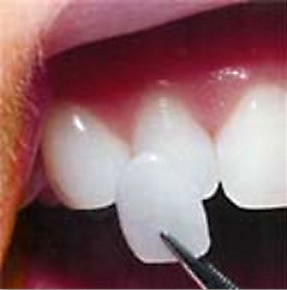Should I Get Traditional or Ultra Thin Porcelain Veneers?
Posted by writeradmin
I have been looking into getting porcelain veneers for a smile makeover. I am a bit torn between whether or not to get the traditional porcelain veneers or the ultra-thin ones. I’ve read there are also no-prep veneers but the reviews on them seem to be mixed. Do you have some guidance for me here? I want to do this right.
Miranda
Dear Miranda,
It is great that you are trying to do some research ahead of time. Too many patients go into this blindly without any understanding of what they are getting. For those who don’t know, porcelain veneers are made of thin wafers of porcelain that are bonded to the front of your teeth. They’ll cover the front and hug the sides just a bit.
Traditional Versus Ultra-Thin Veneers
Traditional porcelain veneers are about one-half a millimeter thick. That is pretty thin to begin with. The so-called “no-prep” and ultra thin veneers, which are one and the same, are slightly thinner than that. There is one particular company, Lumineers, that strongly markets to inexperienced cosmetic dentists as being easy to place because they say the teeth don’t have to be prepped. In almost all cases, when porcelain veneers are placed without any tooth preparation, the results end up too bulky to look or feel natural. Some tooth preparation is recommended even with the thinnest of porcelain veneer brands.
Picking the Right Materials for Your Smile Makeover
Do you know what the number one factor is in assuring that you get a beautiful smile makeover? Believe it or not it is not the brand or even type of porcelain veneer you get. It’s the dentist. Smile makeovers are not taught in dental school, nor is cosmetic dentistry a recognized specialty. This means that for a dentist to develop the technical knowledge, skill, and artistry required to do it well, they have to invest in post-doctoral training on their own. Additionally, it means that any general dentist can call themselves a cosmetic dentist regardless of the amount of that training they have invested in.
What I would like you to do is make a list of cosmetic dentists in your area. Check out their bio and see who has invested in post-doctoral training. From that list, you should then look at their smile galleries. This should be before and after pictures of work they’ve done themselves. If they don’t have stunning results then you need to move onto the next dentist.
Finally, make sure they agree to not permanently bond the porcelain veneers on until you are 100% happy with the end result. You should be able to have them placed with a temporary try-in paste and get a good look at them in several different types of lighting. If there is anything you are not thrilled with, then your cosmetic dentist should be willing to send them right back to the lab for changes.
This blog is brought to you by Arnold, MD Cosmetic Dentist Dr. Meredith Esposito.


